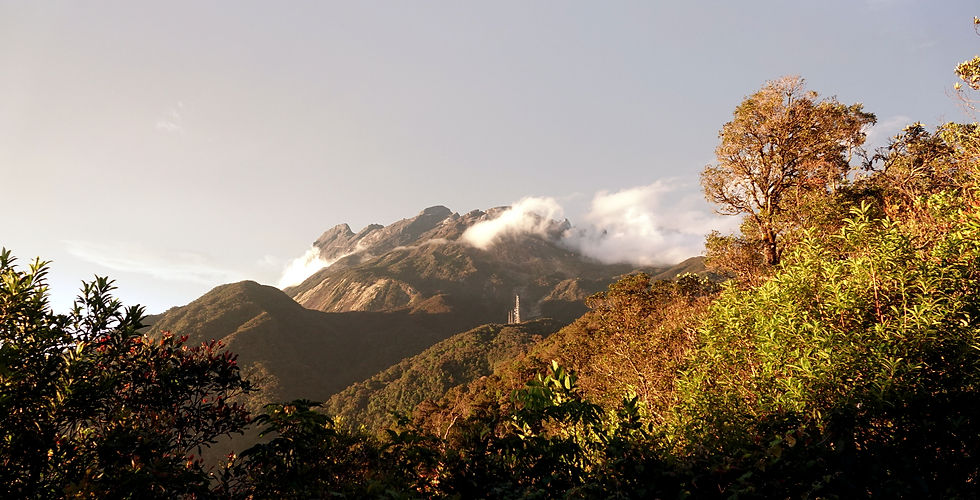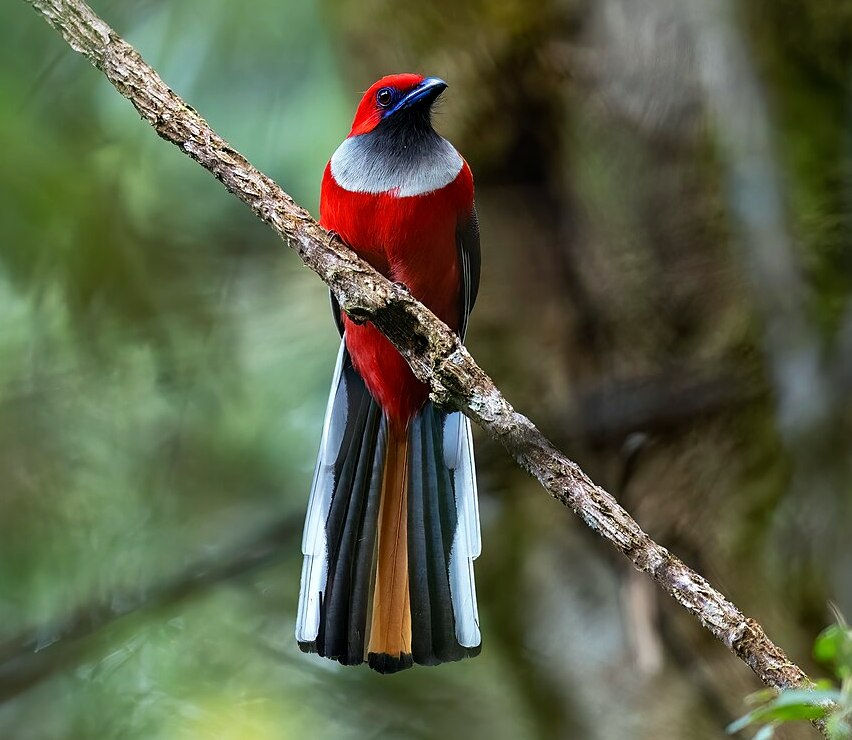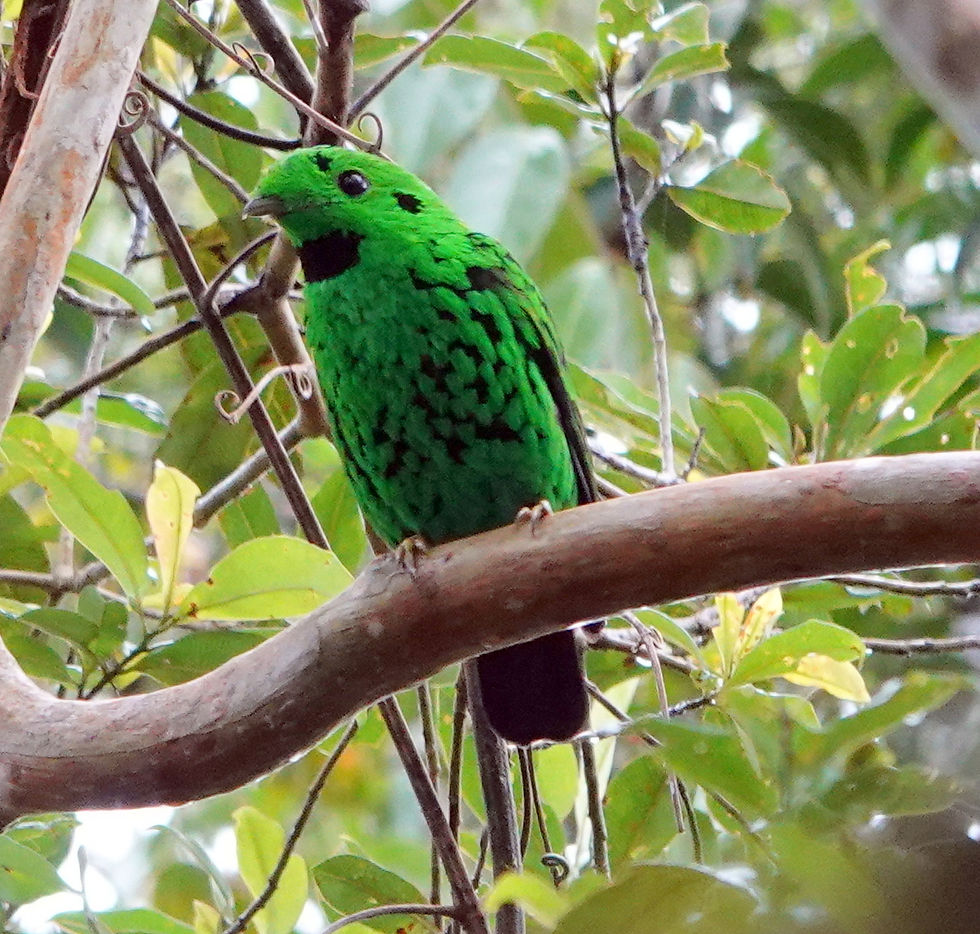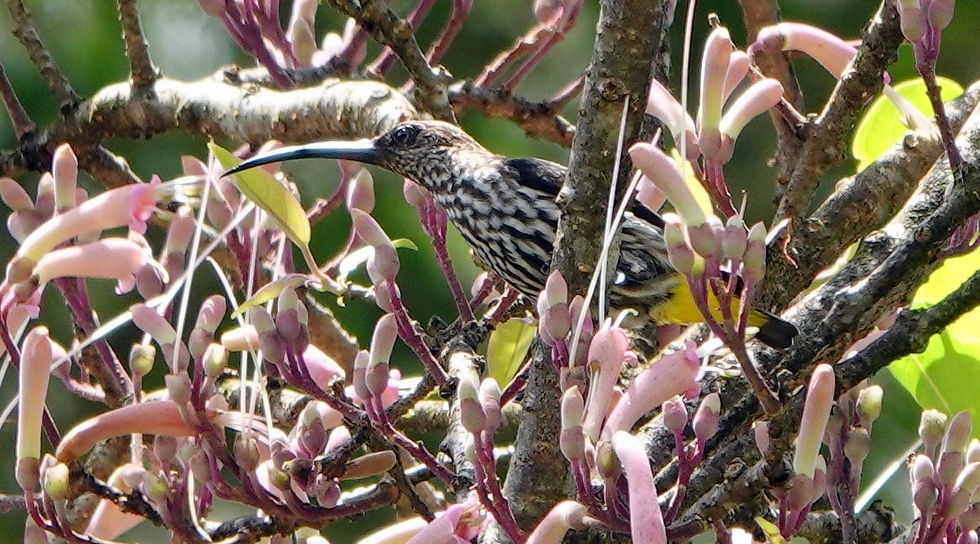Bornean Banter and Birds: Part 3 - Kinabalu National Park
- Denis Walls

- Aug 6
- 4 min read
Updated: Aug 8
Denis Walls | Convenor
Editor’s note: This is the third article in a series being published in Contact Call with permission of the author Denis Walls. It was originally published in Cairns Birders Newsletter, “The New Frogmouth” Number 23 of 6 June 2025. Parts 1 and 2 were published in Contact Call in June 2025.
Jennifer H Muir
Most tourists who visit Borneo arrive in Kota Kinabalu, the capital of Sabah, which is part of East Malaysia.

Stella and I climbed Mt Kinabalu back in 1982, when Stella was three months pregnant with our son Liam who, fortunately, doesn’t seem to have suffered any lasting effects from oxygen deprivation! He never stops talking.
We went back again in 2007 and I was a bit nervous about returning 18 years later in 2025 for fear that mass tourism might have taken over the mountain. Happily, aware of the risk, the Malaysian Government has enacted controls about the numbers of climbers allowed up the mountain at any one time, and things are, apparently, manageable. This includes a huge upgrade on the accommodation at the top compared with that in 1982: ensuite at the top of a mountain - imagine!
Heading to our destination outside the Kinabalu National Park, we stopped to photograph a gorgeously cute, endemic and highly localised White-fronted Falconet which was conveniently perched on an electricity wire. What a wee charmer!

Also en route, a Blyth’s Hawk-Eagle circled momentarily overhead and gave us crippling views. I know it’s easy to get carried away when you’re birding in new or unusual places, but this has got to be one of the most beautiful raptors anywhere. Look at the photo and judge for yourselves.

The key birding targets in the Kinabalu National Park are the ornithological trifecta of Whitehead’s Trogon, Broadbill and Spiderhunter, three uncommon, endemic species discovered by John Whitehead, a British explorer and collector who travelled throughout Borneo between 1885 and 1888.



Indeed, Stella and I pointed out the location of a Whitehead’s Trogon pair, back in 1982 at Mt Kinabalu, to the doyen of the birding world at the time, Ben King who, in 1975, wrote the first detailed Field Guide to the Birds of South-East Asia. He was apoplectic with envy. “Where, where, are you sure?” “Yep, they were just flitting around back there, Ben”. I’m being a bit smug with Ben because he’s the guy who gave Stella and me heaps, at a later date in Taman Negara in Peninsula Malaysia, for pointing out a (regular) Green Broadbill to him and his group. “Trash bird,” he famously said, and I’ve been dining out on that story ever since! (By the way, I don’t think Ben and his group saw the Whitehead’s Trogons following our instructions! The birds had gone.)
Another increasingly sought after species is the rare and elusive thrush, the Fruit-hunter. We had seen all of the Whitehead species before, but not the Fruit-hunter.

There have been big changes in birding since 1982. Photography has taken a forward seat. Even as late as 2007 relatively few people were wielding monster cameras to the degree they are now. I’m still a bridge camera guy, probably to my detriment in the Malaysian forest environment, I have to say. The light simply isn’t good enough for the kind of photography that the likes of my birding colleagues Scott, Michael and Janet can produce. But I was determined to try. I was treating these three iconic species as if they would be my first ever encounters. Old age makes your past memories fuzzy anyway!
We were not disappointed. On our previous tour we had to hunt down the Whitehead’s trifecta in the forest, which is hard, leech-ridden yakka. This time we followed the road. More birders mean more sharing of information. It’s not quite the intimate experience of yore but the Singaporean, Indian and Japanese photographers walk up and down the road all day, with their guides, until there’s a sighting of either the Trogon or the Broadbill. The Spiderhunter is very dependent on where the flowers are.

So, yes, although we had to share the trogon and broadbill encounters with others, they were, nonetheless, as amazing as I remember from before. Both birds are astoundingly beautiful. The Trogon seldom calls and appears like phantasmagoria fanning its magnificent tail. The Spiderhunter is harder to see but a flowering tree bore metaphorical fruit.
The Fruit-hunter was spotted by eagle-eyed Stella by the side of the road at a fortuitous moment. But, as a version of the saying goes, “the harder I try (or practise), the luckier I get”. Birding can be a slog and getting up at 4 o’clock in the morning has to bring some kind of reward, don’t you think? The other bird photos are the supporting cast to the Three Musketeers (Whitehead’s trio) and D’Artagnan (the Fruit-hunter) with Falconet and Hawk-eagle as the warmup act. Please take your time to enjoy the performance.
The author would like to thank Janet Lo for her positive feedback on the previous two episodes of Bornean Banter and Birds and the photos therein. Janet is Malaysian and an excellent photographer so her comments are especially welcome. Terima kasih, Janet. I hope you enjoy this instalment.




